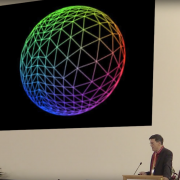The dreadful cost of flying
MYTH: Since flying is responsible for only 5 percent of carbon emissions, I have the right to fly abroad on holiday.
Don’t be fooled when airline representatives reassure people in the UK that flying creates ‘only’ five percent of our national carbon emissions, as if it is too small an amount for anyone to get steamed up about. If five percent of a mountain fell on top of you, you’d care.
And if your car were to plough into a group of 20 pedestrians and crush one to death, you couldn’t get away with saying you’d ‘only’ hurt five percent of the pedestrians. Five percents can matter! But it may strike you as going too far to compare the impact of flying with the impact of a car crushing a human body. Is it unfair?
To find out more about the real climate impacts of flying, I turned to George Marshall, founder of the Climate Outreach and Information Network. In his immensely readable and reasonable book, Carbon Detox, Marshall explains why planes are so toxic to the climate. It’s not only because they burn such large amounts of fossil fuels, but it’s also because the fuel burned by jet engines causes nearly three times as much damage as the same amount of fuel burned by a car at ground level.
‘The very high temperatures inside jet engines create nitrous oxides, which are very powerful greenhouse gases,’ says Marshall, ‘310 times more powerful than carbon dioxide.’ So that ‘five percent’ acknowledged by the airlines actually has the impact of something more like 14 percent of the UK’s carbon dioxide emissions. Bad enough? There’s worse. ‘Jet planes also produce vapour trails called contrails… These, too, are heat trapping, especially at night.’
In case that hasn’t pushed the percentage up high enough, Marshall reminds us also that these figures are based on the amount of flying in the mid-2000s, though the Tyndall Centre for Climate Change Research expects air traffic to double over the next 30 years – and then, says Marshall, its climate impact ‘will swamp all other government targets to deal with climate change’.
That’s a terrifying thought. We’re supposed to be lowering our emissions by 80% by 2050 – and everything we are doing to reach that target will be erased by flying! Why is the government not banning planes? Instead, they’re building more air-travel capacity. It makes no sense. The airlines make weird offers too. Virgin Airlines offered to plant trees to soak up the emissions of the limousines that pick up their first-class passengers. Oh, wow.
Marshall is in no doubt that ‘flying is the single most destructive thing you can do’ – and ‘because there is a direct relationship between emissions and impacts, we should be able to predict how many people will die for each additional tonne of C02 we emit.’ He introduces Craig Simmons of Best Foot Forward, who has worked out a rough figure (necessarily rough, because there are so many variables) that ‘one person could die, be made homeless, require urgent medical attention or face starvation for every 102 tonnes of carbon dioxide we add to the air.’
So, since an average American emits 20+ tonnes per year, every five years, he or she will have caused death, starvation, homelessness or serious illness to some fellow human being living in a vulnerable commuity – someone they have never met, and who has never done them any harm. It’s a stunning injustice.
If I had an average UK carbon footprint, it would take a decade for me to have that kind of impact – unless I flew. If I flew with our four daughters to Australia for a fortnight’s holiday, we would have caused that same amount of death or suffering between the time we took off and the time we got back home, just by dint of flying. Could I justify sacrificing someone else’s home, health or life, for that short-lived pleasure?
Craig’s calculation yanks out of the shadows and into the light the realisation that the plane is a lethal weapon. We should use it sparingly and with the greatest care – and put our personal carbon budgets into negative each time for several years to compensate.
But that behaviour is far from today’s reality. Politicians still pander to a ‘binge-flying’ culture, where Britons pop over to Tallinn or Berlin for a boozy weekend, or to their second homes in Spain without a second thought. And the phoney arguments about planes ‘only’ emitting five percent of our carbon emissions, or the ‘rights’ of holidaymakers to travel at will on inessential flights, simply deflect our attention away from the shocking consequences: the entirely unnecessary wrecking of the lives of innocent human beings. What gives any of us the ‘right’ to do this?
I don’t recall a ‘right’ to ruin, maim or kill listed in the Universal Declaration of Human Rights, nor a ‘right’ to casual, unthinking flights. I do recall it listing every person’s right to survive.
George Marshall’s friend and fellow author George Monbiot talks about 95 percent cuts at airports. That leaves…. that magic five percent! Saved for really essential air travel. Now that’s the sort of plane-related five percent I like the sound of.
This mythbuster is based on information from Carbon Detox by George Marshall, Gaia 2007











Leave a Reply
Want to join the discussion?Feel free to contribute!